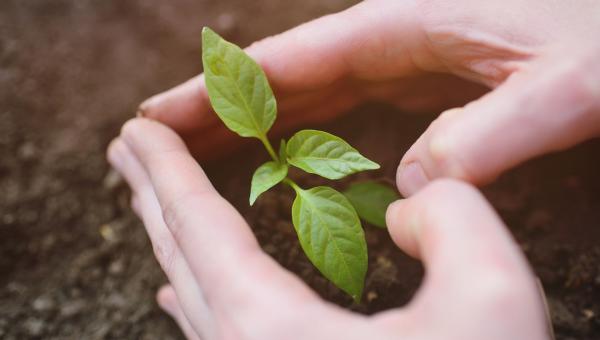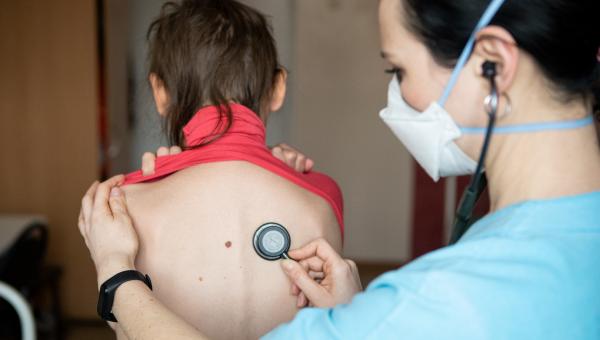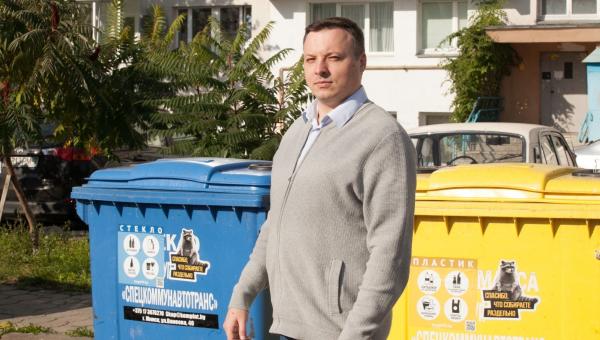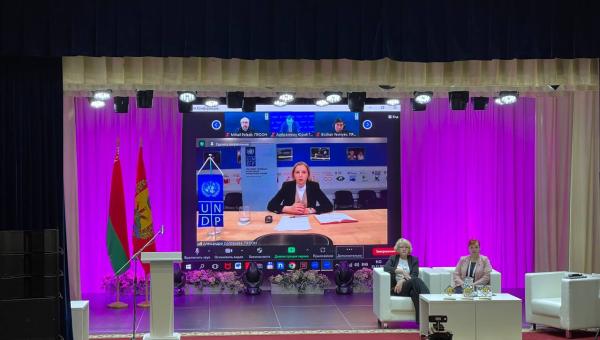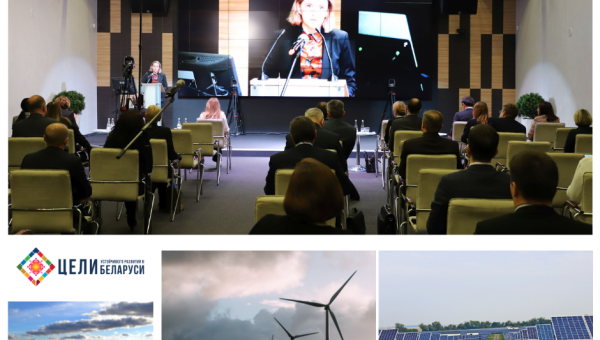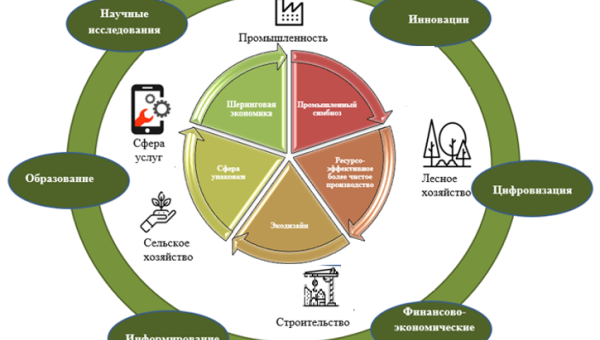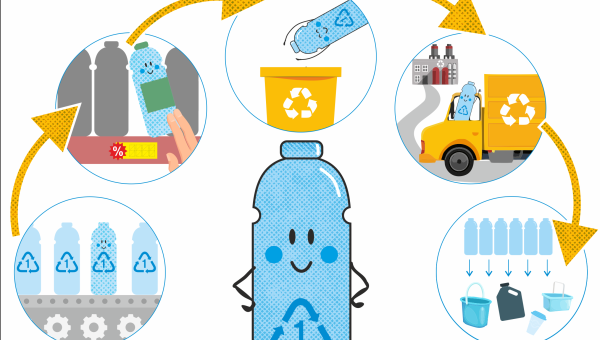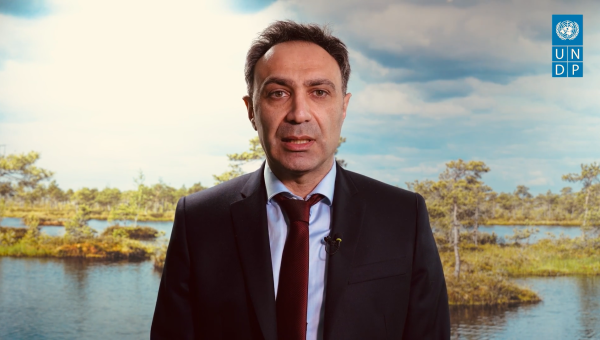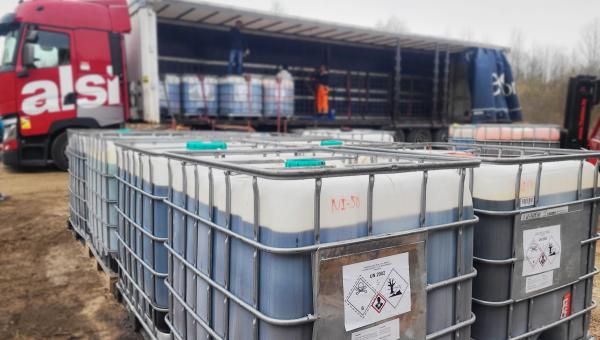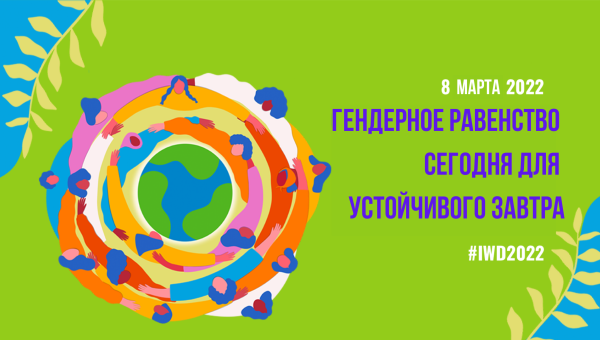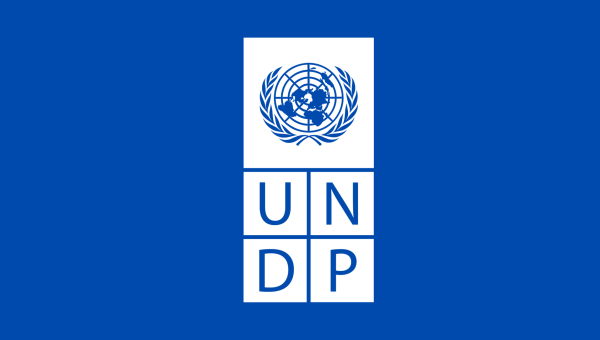
ЦЕЛИ УСТОЙЧИВОГО РАЗВИТИЯ В ДЕЙСТВИИ
Что такое Цели устойчивого развития?
Цели в области устойчивого развития (ЦУР), также известные как Глобальные цели, были приняты Организацией Объединенных Наций в 2015 г. в качестве универсального призыва к действиям, направленным на искоренение бедности, защиту планеты и обеспечению мира и процветания к 2030 г.
17 ЦУР носят комплексный характер: в них признается, что действия в одной области влияют на результаты в других, и что развитие должно обеспечивать баланс между социальной, экономической и экологической устойчивостью.
Страны обязались уделять первоочередное внимание прогрессу в интересах тех, кто наиболее отстал. ЦУР призваны положить конец бедности, голоду, СПИДу и дискриминации в отношении женщин и девочек.
Для достижения ЦУР в любом контексте необходимы творческий подход, ноу-хау, технологии и финансовые ресурсы всего общества.
Цель 1
ЛИКВИДАЦИЯ НИЩЕТЫ
Искоренение нищеты во всех ее формах остается одним из главных вызовов, стоящих перед человечеством. Хотя число людей, живущих в условиях крайней нищеты, сократилось более чем наполовину в период с 1990 по 2015 годы, слишком многие все еще борются за удовлетворение самых основных человеческих потребностей.
По состоянию на 2015 год около 736 миллионов человек по-прежнему жили менее чем на 1,90 доллара США в день. Многим не хватает еды, чистой питьевой воды и базовых санитарных условий. Быстрый рост в таких странах, как Китай и Индия, позволил миллионам людей вырваться из бедности, но прогресс был неравномерным. Женщины чаще оказываются бедными, чем мужчины, потому что у них меньше оплачиваемой работы, образования и имущества в собственности.
Прогресс также был ограниченным в других регионах, таких как Южная Азия и страны Африки к югу от Сахары, на которые приходится 80 процентов людей, живущих в условиях крайней бедности. Новые угрозы, вызванные изменением климата, конфликтами и отсутствием продовольственной безопасности, означают, что необходимо приложить еще больше усилий, чтобы вывести людей из нищеты.
ЦУР — это смелое обязательство завершить начатое и покончить с бедностью во всех ее формах и измерениях к 2030 году. Это предполагает работу с наиболее уязвимыми слоями населения, увеличение объема базовых ресурсов и услуг, а также поддержку сообществ, пострадавших от конфликтов и стихийных бедствий, вызванных изменением климата.

736
миллионов
736 миллионов человек по-прежнему живут в условиях крайней бедности
10
процентов
10% мирового населения живут в условиях крайней бедности по сравнению с 36% в 1990 году
1.3
миллиарда
Около 1,3 миллиарда человек живут в условиях многомерной бедности
50
процентов
Половина всех людей, живущих в бедности, моложе 18 лет.
1
из 10
Каждый десятый человек крайне беден
Целевые показатели
- К 2030 году сократить долю мужчин, женщин и детей всех возрастов, живущих в нищете во всех ее проявлениях, согласно национальным определениям, по крайней мере наполовину
- Внедрить соответствующие национальным условиям системы и меры социальной защиты для всех, включая минимальные уровни, и к 2030 году добиться значительного охвата бедных и уязвимых слоев населения
- К 2030 году обеспечить, чтобы все мужчины и женщины, особенно малоимущие и уязвимые, имели равные права на экономические ресурсы, а также доступ к базовым услугам, владению и распоряжению землей и другими формами собственности, наследуемому имуществу, природным ресурсам, новым технологиям и финансовым услугам, включая микрофинансирование
- К 2030 году повысить жизнестойкость малоимущих и лиц, находящихся в уязвимом положении, и уменьшить их незащищенность и уязвимость перед вызванными изменением климата экстремальными погодными явлениями и другими экономическими, социальными и экологическими потрясениями и бедствиями
- Обеспечить мобилизацию значительных ресурсов из самых разных источников, в том числе на основе активизации сотрудничества в целях развития, с тем чтобы предоставить развивающимся странам, особенно наименее развитым странам, достаточные и надежные средства для реализации программ и стратегий по ликвидации нищеты во всех ее формах
- Создать на национальном, региональном и международном уровнях надежные механизмы, в основе которых лежали бы стратегии развития, учитывающие интересы бедных людей и гендерные аспекты, для содействия ускоренному инвестированию в мероприятия по ликвидации нищеты
ЦУР в действии
Цель 2
ЛИКВИДАЦИЯ ГОЛОДА
За последние два десятилетия число недоедающих людей сократилось почти вдвое из-за быстрого экономического роста и повышения производительности сельского хозяйства. Многие развивающиеся страны, которые раньше страдали от голода и недоедания, теперь могут удовлетворить свои потребности в питании. Центральная и Восточная Азия, Латинская Америка и страны Карибского бассейна добились огромного прогресса в искоренении голода.
К сожалению, голодание и недоедание остается огромным препятствием для развития во многих странах. По оценкам, по состоянию на 2017 год 821 миллион человек хронически недоедают, что часто является прямым следствием ухудшения состояния окружающей среды, засухи и утраты биоразнообразия. Более 90 миллионов детей в возрасте до пяти лет имеют недостаточный вес. Недоедание и острая нехватка продовольствия увеличивается почти во всех регионах Африки и в Южной Америке.
Цели устойчивого развития направлены на то, чтобы к 2030 году покончить со всеми формами голода и недоедания, обеспечив всем людям, особенно детям, достаточное количество питательной пищи в течение всего года. Они предполагают продвижение устойчивого сельского хозяйства, поддержку мелких фермеров и обеспечение равного доступа к земле, технологиям и рынкам. Также необходимо международное сотрудничества для направления инвестиций в инфраструктуру и технологии, повышающие производительность сельского хозяйства.

821
миллион
В 2017 году число недоедающих людей достигло 821 миллион человек
63
процента
В 2017 году на Азию приходилось почти две трети голодающих людей (63%)
22
процента
В 2017 году почти 151 миллион детей в возрасте до пяти лет (22%) страдали от задержки роста
1
из 8
Каждый восьмой человек страдает ожирением
1
из 3
Каждая третья женщина репродуктивного возраста страдает анемией
26
процентов
26 процентов работников заняты в секторе сельского хозяйства
Целевые показатели
- К 2030 году покончить со всеми формами недоедания, в том числе достичь к 2025 году согласованных на международном уровне целевых показателей по борьбе с задержкой роста и истощением у детей в возрасте до пяти лет, а также удовлетворять потребности в питании девочек подросткового возраста, беременных и кормящих женщин и пожилых людей
- К 2030 году удвоить продуктивность сельского хозяйства и доходы мелких производителей продуктов питания, в частности женщин, представителей коренных народов, семейных фермерских хозяйств, скотоводов и рыбаков, в том числе посредством обеспечения гарантированного и равного доступа к земле, другим производственным ресурсам и факторам сельскохозяйственного производства, знаниям, финансовым услугам, рынкам и возможностям для увеличения добавленной стоимости и занятости в сельскохозяйственном секторе
- К 2030 году обеспечить создание устойчивых систем производства продуктов питания и внедрить методы ведения сельского хозяйства, которые повышают производительность труда и объем производства, способствуют сохранению экосистем, укрепляют способность адаптироваться к изменению климата, экстремальным погодным явлениям, засухам, наводнениям и другим бедствиям, а также постепенно улучшают качество земель и почв
- К 2020 году обеспечить сохранение генетического разнообразия семян и культивируемых растений, а также сельскохозяйственных и домашних животных и их соответствующих диких видов, в том числе посредством надлежащего содержания разнообразных банков семян и растений на национальном, региональном и международном уровнях; содействовать расширению доступа к генетическим ресурсам и связанным с ними традиционным знаниям; способствовать совместному использованию на справедливой и равной основе выгод от их применения на согласованных на международном уровне условиях
- Увеличить объем инвестиций, в том числе посредством активизации международного сотрудничества, в сельскую инфраструктуру, сельскохозяйственные исследования и распространение информации, развитие технологий и создание генетических банков растений и животных в целях укрепления потенциала развивающихся стран, особенно наименее развитых стран, в области сельскохозяйственного производства
- Устранять и пресекать введение торговых ограничений и возникновение искажений на мировых рынках сельскохозяйственной продукции, в том числе посредством параллельной ликвидации всех форм субсидирования экспорта сельскохозяйственной продукции и всех экспортных мер, имеющих аналогичные последствия, в соответствии с мандатом Дохийского раунда многосторонних переговоров ВТО
- Принять меры для обеспечения надлежащего функционирования рынков продовольственных товаров и из производных; содействовать своевременному доступу к рыночной информации, в том числе о продовольственных резервах, с целью ограничить чрезмерную волатильность цен на продовольствие
ЦУР в действии
Цель 3
ХОРОШЕЕ ЗДОРОВЬЕ И БЛАГОПОЛУЧИЕ
Мы добились большого прогресса в борьбе с несколькими основными причинами смерти и болезней. Ожидаемая продолжительность жизни значительно увеличилась, показатели младенческой и материнской смертности снизились, мы переломили ситуацию с ВИЧ, а смертность от малярии сократилась вдвое.
Хорошее здоровье – неотъемлемая составляющая устойчивого развития, и Повестка дня на период до 2030 года отражает сложность и взаимосвязанность этих двух задач. Она учитывает растущее экономическое и социальное неравенство, стремительную урбанизацию, угрозы климату и окружающей среде, сохраняющееся бремя ВИЧ и других инфекционных заболеваний, а также новые проблемы, такие как неинфекционные заболевания. Всеобщий охват услугами здравоохранения станет важной частью достижения ЦУР 3, а также искоренения нищеты и сокращения неравенства. Новые глобальные приоритеты в области здравоохранения, не включенные в ЦУР, в том числе устойчивость к противомикробным препаратам, также требуют принятия мер.
Однако мировое сообщество отстает от графика достижения ЦУР в области здравоохранения. Прогресс был неравномерным как между странами, так и внутри них. Разрыв между странами с наименьшей и наибольшей продолжительностью жизни составляет 31 год. И хотя некоторые страны добились впечатляющих успехов, средние национальные показатели говорят о том, что многие остались позади. Для устранения неравенства и обеспечения хорошего здоровья для всех необходимы межотраслевые подходы, основанные на правах человека и учитывающие гендерные особенности.

400
миллионов
По меньшей мере 400 миллионов человек не имеют доступа к базовым услугам здравоохранения, а у 40% мирового населения нет достаточной социальной защиты
1.6
миллиарда
Более 1,6 миллиарда человек живут в условиях нестабильности, при которых затяжные кризисы в сочетании с недостаточной способностью государств предоставлять базовые медицинские услуги представляют собой серьезную проблему для глобального здравоохранения.
15
миллионов
По состоянию на конец на 2017 года 21,7 миллиона человек, живущих с ВИЧ, получали антиретровирусную терапию. Однако более 15 миллионов человек все еще не имеют доступа к лечению.
2
секунды
Каждые две секунды один человек в возрасте от 30 до 70 лет преждевременно умирает от неинфекционных заболеваний: сердечно-сосудистых и хронических респираторных заболеваний, диабета или рака.
7
миллионов
Ежегодно 7 миллионов человек умирают от воздействия мелких частиц загрязненного воздуха
1
из 3
Более чем каждая третья женщина в определенный момент своей жизни подвергалась физическому или сексуальному насилию, что привело как к краткосрочным, так и долгосрочным последствиям для их физического, психического, сексуального и репродуктивного здоровья
Целевые показатели
- К 2030 году снизить глобальный коэффициент материнской смертности до менее 70 случаев на 100 000 живорождений
- К 2030 году положить конец предотвратимой смертности новорожденных и детей в возрасте до 5 лет, при этом все страны должны стремиться уменьшить неонатальную смертность до не более 12 случаев на 1000 живорождений, а смертность в возрасте до 5 лет до не более 25 случаев на 1000 живорождений
- К 2030 году положить конец эпидемиям СПИДа, туберкулеза, малярии и тропических болезней и обеспечить борьбу с гепатитом, заболеваниями, передаваемыми через воду, и другими инфекционными заболеваниями
- К 2030 году уменьшить на треть преждевременную смертность от неинфекционных заболеваний посредством профилактики и лечения, а также поддержания психического здоровья и благополучия
- Улучшить профилактику и лечение зависимости от психоактивных веществ, в том числе злоупотребления наркотическими средствами и алкоголем
- К 2020 году вдвое сократить число смертей и травм в результате дорожно-транспортных происшествий по всему миру
- К 2030 году обеспечить всеобщий доступ к услугам по охране сексуального и репродуктивного здоровья, в том числе по планированию семьи, информированию и просвещению, а также включить вопросы репродуктивного здоровья в национальные стратегии и программы
- Обеспечить всеобщий охват услугами здравоохранения, в том числе защиту от финансовых рисков, доступ к качественным основным услугам здравоохранения, а также к безопасным, эффективным, и недорогим базовым лекарственным препаратам и вакцинам
- К 2030 году существенно сократить количество смертей и заболеваний, вызванных воздействием опасных химических веществ и загрязнением либо отравлением воздуха, воды и почв
- При необходимости активизировать осуществление Рамочной конвенции Всемирной организации здравоохранения по борьбе против табака во всех странах
- Оказывать содействие исследованиям и разработкам вакцин и лекарственных препаратов для лечения инфекционных и неинфекционных болезней, которые в первую очередь затрагивают развивающиеся страны. Обеспечить доступность недорогих лекарств первой необходимости и вакцин в соответствии с Дохинской декларацией «Соглашение по ТРИПС и общественное здравоохранение», в которой подтверждается право развивающихся стран в полном объеме использовать положения Соглашения по торговым аспектам прав интеллектуальной собственности, касающиеся гибких возможностей в целях здоровья населения, и, в частности, обеспечения всеобщего доступа к лекарственным средствам
- Существенно увеличить финансирование здравоохранения и набор, развитие, профессиональную подготовку и удержание медицинских кадров в развивающихся странах, особенно в наименее развитых странах и малых островных развивающихся государствах
- Наращивать потенциал всех стран, особенно развивающихся стран, в области раннего предупреждения, снижения рисков и регулирования национальных и глобальных рисков для здоровья
ЦУР в действии
Цель 4
КАЧЕСТВЕННОЕ ОБРАЗОВАНИЕ
Since 2000, there has been enormous progress in achieving the target of universal primary education. The total enrollment rate in developing regions reached 91 percent in 2015, and the worldwide number of children out of school has dropped by almost half. There has also been a dramatic increase in literacy rates, and many more girls are in school than ever before. These are all remarkable successes.
Progress has also been tough in some developing regions due to high levels of poverty, armed conflicts and other emergencies. In Western Asia and North Africa, ongoing armed conflict has seen an increase in the number of children out of school. This is a worrying trend. While Sub-Saharan Africa made the greatest progress in primary school enrollment among all developing regions – from 52 percent in 1990, up to 78 percent in 2012 – large disparities still remain. Children from the poorest households are up to four times more likely to be out of school than those of the richest households. Disparities between rural and urban areas also remain high.
Achieving inclusive and quality education for all reaffirms the belief that education is one of the most powerful and proven vehicles for sustainable development. This goal ensures that all girls and boys complete free primary and secondary schooling by 2030. It also aims to provide equal access to affordable vocational training, to eliminate gender and wealth disparities, and achieve universal access to a quality higher education.

91
percent
Enrollment in primary education in developing countries has reached 91 percent.
57
million
Still, 57 million primary-aged children remain out of school, more than half of them in sub-Saharan Africa.
1
in 4
In developing countries, one in four girls is not in school.
50
percent
About half of all out-of-school children of primary school age live in conflict-affected areas.
103
million
103 million youth worldwide lack basic literacy skills, and more than 60 percent of them are women.
6
of 10
6 out of 10 children and adolescents are not achieving a minimum level of proficiency in reading and math.
Goal targets
- By 2030, ensure that all girls and boys complete free, equitable and quality primary and secondary education leading to relevant and Goal-4 effective learning outcomes
- By 2030, ensure that all girls and boys have access to quality early childhood development, care and preprimary education so that they are ready for primary education
- By 2030, ensure equal access for all women and men to affordable and quality technical, vocational and tertiary education, including university
- By 2030, substantially increase the number of youth and adults who have relevant skills, including technical and vocational skills, for employment, decent jobs and entrepreneurship
- By 2030, eliminate gender disparities in education and ensure equal access to all levels of education and vocational training for the vulnerable, including persons with disabilities, indigenous peoples and children in vulnerable situations
- By 2030, ensure that all youth and a substantial proportion of adults, both men and women, achieve literacy and numeracy
- By 2030, ensure that all learners acquire the knowledge and skills needed to promote sustainable development, including, among others, through education for sustainable development and sustainable lifestyles, human rights, gender equality, promotion of a culture of peace and non-violence, global citizenship and appreciation of cultural diversity and of culture’s contribution to sustainable development
- Build and upgrade education facilities that are child, disability and gender sensitive and provide safe, nonviolent, inclusive and effective learning environments for all
- By 2020, substantially expand globally the number of scholarships available to developing countries, in particular least developed countries, small island developing States and African countries, for enrolment in higher education, including vocational training and information and communications technology, technical, engineering and scientific programmes, in developed countries and other developing countries
- By 2030, substantially increase the supply of qualified teachers, including through international cooperation for teacher training in developing countries, especially least developed countries and small island developing states
SDGs in Action
Goal 5
Gender Equality
Ending all discrimination against women and girls is not only a basic human right, it’s crucial for sustainable future; it’s proven that empowering women and girls helps economic growth and development.
UNDP has made gender equality central to its work and we’ve seen remarkable progress in the past 20 years. There are more girls in school now compared to 15 years ago, and most regions have reached gender parity in primary education.
But although there are more women than ever in the labour market, there are still large inequalities in some regions, with women systematically denied the same work rights as men. Sexual violence and exploitation, the unequal division of unpaid care and domestic work, and discrimination in public office all remain huge barriers. Climate change and disasters continue to have a disproportionate effect on women and children, as do conflict and migration.
It is vital to give women equal rights land and property, sexual and reproductive health, and to technology and the internet. Today there are more women in public office than ever before, but encouraging more women leaders will help achieve greater gender equality.

77
cents
Women earn only 77 cents for every dollar that men get for the same work.
1
in 3
35 percent of women have experienced physical and/or sexual violence.
13
percent
Women represent just 13 percent of agricultural landholders.
750
million
Almost 750 million women and girls alive today were married before their 18th birthday.
2
of 3
Two thirds of developing countries have achieved gender parity in primary education.
24
percent
Only 24 percent of national parliamentarians were women as of November 2018, a small increase from 11.3 percent in 1995.
Goal targets
- End all forms of discrimination against all women and girls everywhere
- Eliminate all forms of violence against all women and girls in the public and private spheres, including trafficking and sexual and other types of exploitation
- Eliminate all harmful practices, such as child, early and forced marriage and female genital mutilation
- Recognize and value unpaid care and domestic work through the provision of public services, infrastructure and social protection policies and the promotion of shared responsibility within the household and the family as nationally appropriate
- Ensure women’s full and effective participation and equal opportunities for leadership at all levels of decisionmaking in political, economic and public life
- Ensure universal access to sexual and reproductive health and reproductive rights as agreed in accordance with the Programme of Action of the International Conference on Population and Development and the Beijing Platform for Action and the outcome documents of their review conferences
- Undertake reforms to give women equal rights to economic resources, as well as access to ownership and control over land and other forms of property, financial services, inheritance and natural resources, in accordance with national laws
- Enhance the use of enabling technology, in particular information and communications technology, to promote the empowerment of women
- Adopt and strengthen sound policies and enforceable legislation for the promotion of gender equality and the empowerment of all women and girls at all levels
SDGs in Action
Goal 6
Clean water and sanitation
Water scarcity affects more than 40 percent of people, an alarming figure that is projected to rise as temperatures do. Although 2.1 billion people have improved water sanitation since 1990, dwindling drinking water supplies are affecting every continent.
More and more countries are experiencing water stress, and increasing drought and desertification is already worsening these trends. By 2050, it is projected that at least one in four people will suffer recurring water shortages.
Safe and affordable drinking water for all by 2030 requires we invest in adequate infrastructure, provide sanitation facilities, and encourage hygiene. Protecting and restoring water-related ecosystems is essential.
Ensuring universal safe and affordable drinking water involves reaching over 800 million people who lack basic services and improving accessibility and safety of services for over two billion.
In 2015, 4.5 billion people lacked safely managed sanitation services (with adequately disposed or treated excreta) and 2.3 billion lacked even basic sanitation.

5.2
billion
71 percent of the global population, 5.2 billion people, had safely-managed drinking water in 2015, but 844 million people still lacked even basic drinking water.
2.9
billion
39 percent of the global population, 2.9 billion people, had safe sanitation in 2015, but 2.3 billion people still lacked basic sanitation. 892 million people practiced open defecation.
80
percent
80 percent of wastewater goes into waterways without adequate treatment.
2
billion
Water stress affects more than 2 billion people, with this figure projected to increase.
80
percent
80 percent of countries have laid the foundations for integrated water resources management.
70
percent
The world has lost 70 percent of its natural wetlands over the last century.
Goal targets
- By 2030, achieve universal and equitable access to safe and affordable drinking water for all
- By 2030, achieve access to adequate and equitable sanitation and hygiene for all and end open defecation, paying special attention to the needs of women and girls and those in vulnerable situations
- By 2030, improve water quality by reducing pollution, eliminating dumping and minimizing release of hazardous chemicals and materials, halving the proportion of untreated wastewater and substantially increasing recycling and safe reuse globally
- By 2030, substantially increase water-use efficiency across all sectors and ensure sustainable withdrawals and supply of freshwater to address water scarcity and substantially reduce the number of people suffering from water scarcity
- By 2030, implement integrated water resources management at all levels, including through transboundary cooperation as appropriate
- By 2020, protect and restore water-related ecosystems, including mountains, forests, wetlands, rivers, aquifers and lakes
- By 2030, expand international cooperation and capacity-building support to developing countries in water- and sanitation-related activities and programmes, including water harvesting, desalination, water efficiency, wastewater treatment, recycling and reuse technologies
- Support and strengthen the participation of local communities in improving water and sanitation management
SDGs in Action
Goal 7
Affordable and clean energy
Between 2000 and 2018, the number of people with electricity increased from 78 to 90 percent, and the numbers without electricity dipped to 789 million.
Yet as the population continues to grow, so will the demand for cheap energy, and an economy reliant on fossil fuels is creating drastic changes to our climate.
Investing in solar, wind and thermal power, improving energy productivity, and ensuring energy for all is vital if we are to achieve SDG 7 by 2030.
Expanding infrastructure and upgrading technology to provide clean and more efficient energy in all countries will encourage growth and help the environment.

10
percent
One out of 10 people still lacks electricity, and most live in rural areas of the developing world. More than half are in sub-Saharan Africa.
73
percent
Energy is by far the main contributor to climate change. It accounts for 73 percent of human-caused greenhouse gases.
40
percent
Energy efficiency is key; the right efficiency policies could enable the world to achieve more than 40 percent of the emissions cuts needed to reach its climate goals without new technology.
2.8
billion
Almost a third of the world’s population—2.8 billion—rely on polluting and unhealthy fuels for cooking.
17.5
percent
As of 2017, 17.5 percent of power was generated through renewable sources.
18
million
The renewable energy sector employed a record 11.5 million people in 2019. The changes needed in energy production and uses to achieve the Paris Agreement target of limiting the rise in temperature to below 2C can create 18 million jobs.
Goal targets
- By 2030, ensure universal access to affordable, reliable and modern energy services
- By 2030, increase substantially the share of renewable energy in the global energy mix
- By 2030, double the global rate of improvement in energy efficiency
- By 2030, enhance international cooperation to facilitate access to clean energy research and technology, including renewable energy, energy efficiency and advanced and cleaner fossil-fuel technology, and promote investment in energy infrastructure and clean energy technology
- By 2030, expand infrastructure and upgrade technology for supplying modern and sustainable energy services for all in developing countries, in particular least developed countries, small island developing States, and land-locked developing coun
SDGs in Action
Goal 8
Decent work and economic growth
Over the past 25 years the number of workers living in extreme poverty has declined dramatically, despite the lasting impact of the 2008 economic crisis and global recession. In developing countries, the middle class now makes up more than 34 percent of total employment – a number that has almost tripled between 1991 and 2015.
However, as the global economy continues to recover we are seeing slower growth, widening inequalities, and not enough jobs to keep up with a growing labour force. According to the International Labour Organization, more than 204 million people were unemployed in 2015.
The SDGs promote sustained economic growth, higher levels of productivity and technological innovation. Encouraging entrepreneurship and job creation are key to this, as are effective measures to eradicate forced labour, slavery and human trafficking. With these targets in mind, the goal is to achieve full and productive employment, and decent work, for all women and men by 2030.

5
percent
An estimated 172 million people worldwide were without work in 2018 - an unemployment rate of 5 percent.
1
million
As a result of an expanding labour force, the number of unemployed is projected to increase by 1 million every year and reach 174 million by 2020.
700
million
Some 700 million workers lived in extreme or moderate poverty in 2018, with less than US$3.20 per day.
48
percent
Women’s participation in the labour force stood at 48 per cent in 2018, compared with 75 percent for men. Around 3 in 5 of the 3.5 billion people in the labour force in 2018 were men.
2
billion
Overall, 2 billion workers were in informal employment in 2016, accounting for 61 per cent of the world’s workforce.
85
million
Many more women than men are underutilized in the labour force—85 million compared to 55 million.
Goal targets
- Sustain per capita economic growth in accordance with national circumstances and, in particular, at least 7 per cent gross domestic product growth per annum in the least developed countries
- Achieve higher levels of economic productivity through diversification, technological upgrading and innovation, including through a focus on high-value added and labour-intensive sectors
- Promote development-oriented policies that support productive activities, decent job creation, entrepreneurship, creativity and innovation, and encourage the formalization and growth of micro-, small- and medium-sized enterprises, including through access to financial services
- Improve progressively, through 2030, global resource efficiency in consumption and production and endeavour to decouple economic growth from environmental degradation, in accordance with the 10-year framework of programmes on sustainable consumption and production, with developed countries taking the lead
- By 2030, achieve full and productive employment and decent work for all women and men, including for young people and persons with disabilities, and equal pay for work of equal value
- By 2020, substantially reduce the proportion of youth not in employment, education or training
- Take immediate and effective measures to eradicate forced labour, end modern slavery and human trafficking and secure the prohibition and elimination of the worst forms of child labour, including recruitment and use of child soldiers, and by 2025 end child labour in all its forms
- Protect labour rights and promote safe and secure working environments for all workers, including migrant workers, in particular women migrants, and those in precarious employment
- By 2030, devise and implement policies to promote sustainable tourism that creates jobs and promotes local culture and products
- Strengthen the capacity of domestic financial institutions to encourage and expand access to banking, insurance and financial services for all
- Increase Aid for Trade support for developing countries, in particular least developed countries, including through the Enhanced Integrated Framework for Trade-Related Technical Assistance to Least Developed Countries
- By 2020, develop and operationalize a global strategy for youth employment and implement the Global Jobs Pact of the International Labour Organization
SDGs in Action
Goal 9
Industry, innovation and infrastructure
Investment in infrastructure and innovation are crucial drivers of economic growth and development. With over half the world population now living in cities, mass transport and renewable energy are becoming ever more important, as are the growth of new industries and information and communication technologies.
Technological progress is also key to finding lasting solutions to both economic and environmental challenges, such as providing new jobs and promoting energy efficiency. Promoting sustainable industries, and investing in scientific research and innovation, are all important ways to facilitate sustainable development.
More than 4 billion people still do not have access to the Internet, and 90 percent are from the developing world. Bridging this digital divide is crucial to ensure equal access to information and knowledge, as well as foster innovation and entrepreneurship.

2.3
billion
Worldwide, 2.3 billion people lack access to basic sanitation.
40
percent
In some low-income African countries, infrastructure constraints cut businesses’ productivity by around 40 percent.
2.6
billion
2.6 billion people in developing countries do not have access to constant electricity.
90
percent
More than 4 billion people still do not have access to the Internet; 90 percent of them are in the developing world.
2.3
million
The renewable energy sectors currently employ more than 2.3 million people; the number could reach 20 million by 2030.
30
percent
In developing countries, barely 30 percent of agricultural products undergo industrial processing, compared to 98 percent high-income countries.
Goal targets
- Develop quality, reliable, sustainable and resilient infrastructure, including regional and transborder infrastructure, to support economic development and human well-being, with a focus on affordable and equitable access for all
- Promote inclusive and sustainable industrialization and, by 2030, significantly raise industry’s share of employment and gross domestic product, in line with national circumstances, and double its share in least developed countries
- Increase the access of small-scale industrial and other enterprises, in particular in developing countries, to financial services, including affordable credit, and their integration into value chains and markets
- By 2030, upgrade infrastructure and retrofit industries to make them sustainable, with increased resource-use efficiency and greater adoption of clean and environmentally sound technologies and industrial processes, with all countries taking action in accordance with their respective capabilities
- Enhance scientific research, upgrade the technological capabilities of industrial sectors in all countries, in particular developing countries, including, by 2030, encouraging innovation and substantially increasing the number of research and development workers per 1 million people and public and private research and development spending
- Facilitate sustainable and resilient infrastructure development in developing countries through enhanced financial, technological and technical support to African countries, least developed countries, landlocked developing countries and small island developing States 18
- Support domestic technology development, research and innovation in developing countries, including by ensuring a conducive policy environment for, inter alia, industrial diversification and value addition to commodities
- Significantly increase access to information and communications technology and strive to provide universal and affordable access to the Internet in least developed countries by 2020
SDGs in Action
Goal 10
Reduced inequalities
Income inequality is on the rise—the richest 10 percent have up to 40 percent of global income whereas the poorest 10 percent earn only between 2 to 7 percent. If we take into account population growth inequality in developing countries, inequality has increased by 11 percent.
Income inequality has increased in nearly everywhere in recent decades, but at different speeds. It’s lowest in Europe and highest in the Middle East.
These widening disparities require sound policies to empower lower income earners, and promote economic inclusion of all regardless of sex, race or ethnicity.
Income inequality requires global solutions. This involves improving the regulation and monitoring of financial markets and institutions, encouraging development assistance and foreign direct investment to regions where the need is greatest. Facilitating the safe migration and mobility of people is also key to bridging the widening divide.

22
percent
In 2016, 22 percent of global income was received by the top 1 percent compared with 10 percent of income for the bottom 50 percent.
16
percent
In 1980, the top one percent had 16 percent of global income. The bottom 50 percent had 8 percent of income.
33
percent
Economic inequality is largely driven by the unequal ownership of capital. Since 1980, very large transfers of public to private wealth occurred in nearly all countries. The global wealth share of the top 1 percent was 33 percent in 2016.
39
percent
Under "business as usual", the top 1 percent global wealth will reach 39 percent by 2050.
2
x
Women spend, on average, twice as much time on unpaid housework as men.
60
percent
Women have as much access to financial services as men in just 60 percent of the countries assessed and to land ownership in just 42 percent of the countries assessed.
Goal targets
- By 2030, progressively achieve and sustain income growth of the bottom 40 per cent of the population at a rate higher than the national average
- By 2030, empower and promote the social, economic and political inclusion of all, irrespective of age, sex, disability, race, ethnicity, origin, religion or economic or other status
- Ensure equal opportunity and reduce inequalities of outcome, including by eliminating discriminatory laws, policies and practices and promoting appropriate legislation, policies and action in this regard
- Adopt policies, especially fiscal, wage and social protection policies, and progressively achieve greater equality
- Improve the regulation and monitoring of global financial markets and institutions and strengthen the implementation of such regulations
- Ensure enhanced representation and voice for developing countries in decision-making in global international economic and financial institutions in order to deliver more effective, credible, accountable and legitimate institutions
- Facilitate orderly, safe, regular and responsible migration and mobility of people, including through the implementation of planned and well-managed migration policies
- Implement the principle of special and differential treatment for developing countries, in particular least developed countries, in accordance with World Trade Organization agreements
- Encourage official development assistance and financial flows, including foreign direct investment, to States where the need is greatest, in particular least developed countries, African countries, small island developing States and landlocked developing countries, in accordance with their national plans and programmes
- By 2030, reduce to less than 3 per cent the transaction costs of migrant remittances and eliminate remittance corridors with costs higher than 5 per cent
SDGs in Action
Goal 11
Sustainable cities and communities
More than half of us live in cities. By 2050, two-thirds of all humanity—6.5 billion people—will be urban. Sustainable development cannot be achieved without significantly transforming the way we build and manage our urban spaces.
The rapid growth of cities—a result of rising populations and increasing migration—has led to a boom in mega-cities, especially in the developing world, and slums are becoming a more significant feature of urban life.
Making cities sustainable means creating career and business opportunities, safe and affordable housing, and building resilient societies and economies. It involves investment in public transport, creating green public spaces, and improving urban planning and management in participatory and inclusive ways.

4.2
billion
In 2018, 4.2 billion people, 55 percent of the world’s population, lived in cities. By 2050, the urban population is expected to reach 6.5 billion.
3
percent
Cities occupy just 3 percent of the Earth’s land but account for 60 to 80 percent of energy consumption and at least 70 percent of carbon emissions.
828
million
828 million people are estimated to live in slums, and the number is rising.
33
cities
In 1990, there were 10 cities with 10 million people or more; by 2014, the number of mega-cities rose to 28, and was expected to reach 33 by 2018. In the future, 9 out of 10 mega-cities will be in the developing world.
90
percent
In the coming decades, 90 percent of urban expansion will be in the developing world.
80
percent
The economic role of cities is significant. They generate about 80 percent of the global GDP.
Goal targets
- By 2030, ensure access for all to adequate, safe and affordable housing and basic services and upgrade slums
- By 2030, provide access to safe, affordable, accessible and sustainable transport systems for all, improving road safety, notably by expanding public transport, with special attention to the needs of those in vulnerable situations, women, children, persons with disabilities and older persons
- By 2030, enhance inclusive and sustainable urbanization and capacity for participatory, integrated and sustainable human settlement planning and management in all countries
- Strengthen efforts to protect and safeguard the world’s cultural and natural heritage
- By 2030, significantly reduce the number of deaths and the number of people affected and substantially decrease the direct economic losses relative to global gross domestic product caused by disasters, including water-related disasters, with a focus on protecting the poor and people in vulnerable situations
- By 2030, reduce the adverse per capita environmental impact of cities, including by paying special attention to air quality and municipal and other waste management
- By 2030, provide universal access to safe, inclusive and accessible, green and public spaces, in particular for women and children, older persons and persons with disabilities
- Support positive economic, social and environmental links between urban, peri-urban and rural areas by strengthening national and regional development planning
- By 2020, substantially increase the number of cities and human settlements adopting and implementing integrated policies and plans towards inclusion, resource efficiency, mitigation and adaptation to climate change, resilience to disasters, and develop and implement, in line with the Sendai Framework for Disaster Risk Reduction 2015-2030, holistic disaster risk management at all levels
- Support least developed countries, including through financial and technical assistance, in building sustainable and resilient buildings utilizing local materials
SDGs in Action
Goal 12
Responsible consumption and production
Achieving economic growth and sustainable development requires that we urgently reduce our ecological footprint by changing the way we produce and consume goods and resources. Agriculture is the biggest user of water worldwide, and irrigation now claims close to 70 percent of all freshwater for human use.
The efficient management of our shared natural resources, and the way we dispose of toxic waste and pollutants, are important targets to achieve this goal. Encouraging industries, businesses and consumers to recycle and reduce waste is equally important, as is supporting developing countries to move towards more sustainable patterns of consumption by 2030.
A large share of the world population is still consuming far too little to meet even their basic needs. Halving the per capita of global food waste at the retailer and consumer levels is also important for creating more efficient production and supply chains. This can help with food security, and shift us towards a more resource efficient economy.

1.3
billion
1.3 billion tonnes of food is wasted every year, while almost 2 billion people go hungry or undernourished.
22
percent
The food sector accounts for around 22 percent of total greenhouse gas emissions, largely from the conversion of forests into farmland.
2
billion
Globally, 2 billion people are overweight or obese.
3
percent
Only 3 percent of the world’s water is fresh (drinkable), and humans are using it faster than nature can replenish it.
US$120
billion
If people everywhere switched to energy efficient lightbulbs, the world would save US$120 billion annually.
20
percent
One-fifth of the world’s final energy consumption in 2013 was from renewable sources.
Goal targets
- Implement the 10-year framework of programmes on sustainable consumption and production, all countries taking action, with developed countries taking the lead, taking into account the development and capabilities of developing countries
- By 2030, achieve the sustainable management and efficient use of natural resources
- By 2030, halve per capita global food waste at the retail and consumer levels and reduce food losses along production and supply chains, including post-harvest losses
- By 2020, achieve the environmentally sound management of chemicals and all wastes throughout their life cycle, in accordance with agreed international frameworks, and significantly reduce their release to air, water and soil in order to minimize their adverse impacts on human health and the environment
- By 2030, substantially reduce waste generation through prevention, reduction, recycling and reuse
- Encourage companies, especially large and transnational companies, to adopt sustainable practices and to integrate sustainability information into their reporting cycle
- Promote public procurement practices that are sustainable, in accordance with national policies and priorities
- By 2030, ensure that people everywhere have the relevant information and awareness for sustainable development and lifestyles in harmony with nature
- Support developing countries to strengthen their scientific and technological capacity to move towards more sustainable patterns of consumption and production
- Develop and implement tools to monitor sustainable development impacts for sustainable tourism that creates jobs and promotes local culture and products
- Rationalize inefficient fossil-fuel subsidies that encourage wasteful consumption by removing market distortions, in accordance with national circumstances, including by restructuring taxation and phasing out those harmful subsidies, where they exist, to reflect their environmental impacts, taking fully into account the specific needs and conditions of developing countries and minimizing the possible adverse impacts on their development in a manner that protects the poor and the affected communities
SDGs in Action
Goal 13
Climate action
There is no country that is not experiencing the drastic effects of climate change. Greenhouse gas emissions are more than 50 percent higher than in 1990. Global warming is causing long-lasting changes to our climate system, which threatens irreversible consequences if we do not act.
The annual average economic losses from climate-related disasters are in the hundreds of billions of dollars. This is not to mention the human impact of geo-physical disasters, which are 91 percent climate-related, and which between 1998 and 2017 killed 1.3 million people, and left 4.4 billion injured. The goal aims to mobilize US$100 billion annually by 2020 to address the needs of developing countries to both adapt to climate change and invest in low-carbon development.
Supporting vulnerable regions will directly contribute not only to Goal 13 but also to the other SDGs. These actions must also go hand in hand with efforts to integrate disaster risk measures, sustainable natural resource management, and human security into national development strategies. It is still possible, with strong political will, increased investment, and using existing technology, to limit the increase in global mean temperature to two degrees Celsius above pre-industrial levels, aiming at 1.5°C, but this requires urgent and ambitious collective action.

+1°
Celsius
As of 2017 humans are estimated to have caused approximately 1.0°C of global warming above pre-industrial levels.
+20
cm
Sea levels have risen by about 20 cm (8 inches) since 1880 and are projected to rise another 30–122 cm (1 to 4 feet) by 2100.
2050
To limit warming to 1.5C, global net CO2 emissions must drop by 45% between 2010 and 2030, and reach net zero around 2050.
1/3
Climate pledges under The Paris Agreement cover only one third of the emissions reductions needed to keep the world below 2°C.
US$26
trillion
Bold climate action could trigger at least US$26 trillion in economic benefits by 2030.
18
million
The energy sector alone will create around 18 million more jobs by 2030, focused specifically on sustainable energy.
Goal targets
- Strengthen resilience and adaptive capacity to climate-related hazards and natural disasters in all countries
- Integrate climate change measures into national policies, strategies and planning
- Improve education, awareness-raising and human and institutional capacity on climate change mitigation, adaptation, impact reduction and early warning
- Implement the commitment undertaken by developed-country parties to the United Nations Framework Convention on Climate Change to a goal of mobilizing jointly $100 billion annually by 2020 from all sources to address the needs of developing countries in the context of meaningful mitigation actions and transparency on implementation and fully operationalize the Green Climate Fund through its capitalization as soon as possible
- Promote mechanisms for raising capacity for effective climate change-related planning and management in least developed countries and small island developing States, including focusing on women, youth and local and marginalized communities
SDGs in Action
Goal 14
Life Below Water
The world’s oceans – their temperature, chemistry, currents and life – drive global systems that make the Earth habitable for humankind. How we manage this vital resource is essential for humanity as a whole, and to counterbalance the effects of climate change.
Over three billion people depend on marine and coastal biodiversity for their livelihoods. However, today we are seeing 30 percent of the world’s fish stocks overexploited, reaching below the level at which they can produce sustainable yields.
Oceans also absorb about 30 percent of the carbon dioxide produced by humans, and we are seeing a 26 percent rise in ocean acidification since the beginning of the industrial revolution. Marine pollution, an overwhelming majority of which comes from land-based sources, is reaching alarming levels, with an average of 13,000 pieces of plastic litter to be found on every square kilometre of ocean.
The SDGs aim to sustainably manage and protect marine and coastal ecosystems from pollution, as well as address the impacts of ocean acidification. Enhancing conservation and the sustainable use of ocean-based resources through international law will also help mitigate some of the challenges facing our oceans.

75
percent
The ocean covers three quarters of the Earth’s surface and represents 99 percent of the living space on the planet by volume.
200K
The ocean contains nearly 200,000 identified species, but actual numbers may lie in the millions.
40
percent
As much as 40 percent of the ocean is heavily affected by pollution, depleted fisheries, loss of coastal habitats and other human activities.
30
percent
The ocean absorbs about 30 percent of carbon dioxide produced by humans, buffering the impacts of global warming.
3
billion
More than 3 billion people depend on marine and coastal biodiversity for their livelihoods.
US$3
trillion
The market value of marine and coastal resources and industries is estimated at US$3 trillion per year, about 5 percent of global GDP.
Goal targets
- By 2025, prevent and significantly reduce marine pollution of all kinds, in particular from land-based activities, including marine debris and nutrient pollution
- By 2020, sustainably manage and protect marine and coastal ecosystems to avoid significant adverse impacts, including by strengthening their resilience, and take action for their restoration in order to achieve healthy and productive oceans
- Minimize and address the impacts of ocean acidification, including through enhanced scientific cooperation at all levels
- By 2020, effectively regulate harvesting and end overfishing, illegal, unreported and unregulated fishing and destructive fishing practices and implement science-based management plans, in order to restore fish stocks in the shortest time feasible, at least to levels that can produce maximum sustainable yield as determined by their biological characteristics
- By 2020, conserve at least 10 per cent of coastal and marine areas, consistent with national and international law and based on the best available scientific information
- By 2020, prohibit certain forms of fisheries subsidies which contribute to overcapacity and overfishing, eliminate subsidies that contribute to illegal, unreported and unregulated fishing and refrain from introducing new such subsidies, recognizing that appropriate and effective special and differential treatment for developing and least developed countries should be an integral part of the World Trade Organization fisheries subsidies negotiation
- By 2030, increase the economic benefits to Small Island developing States and least developed countries from the sustainable use of marine resources, including through sustainable management of fisheries, aquaculture and tourism
- Increase scientific knowledge, develop research capacity and transfer marine technology, taking into account the Intergovernmental Oceanographic Commission Criteria and Guidelines on the Transfer of Marine Technology, in order to improve ocean health and to enhance the contribution of marine biodiversity to the development of developing countries, in particular small island developing States and least developed countries
- Provide access for small-scale artisanal fishers to marine resources and markets
- Enhance the conservation and sustainable use of oceans and their resources by implementing international law as reflected in UNCLOS, which provides the legal framework for the conservation and sustainable use of oceans and their resources, as recalled in paragraph 158 of The Future We Want
SDGs in Action
Goal 15
Life on land
Human life depends on the earth as much as the ocean for our sustenance and livelihoods. Plant life provides 80 percent of the human diet, and we rely on agriculture as an important economic resources. Forests cover 30 percent of the Earth’s surface, provide vital habitats for millions of species, and important sources for clean air and water, as well as being crucial for combating climate change.
Every year, 13 million hectares of forests are lost, while the persistent degradation of drylands has led to the desertification of 3.6 billion hectares, disproportionately affecting poor communities.
While 15 percent of land is protected, biodiversity is still at risk. Nearly 7,000 species of animals and plants have been illegally traded. Wildlife trafficking not only erodes biodiversity, but creates insecurity, fuels conflict, and feeds corruption.
Urgent action must be taken to reduce the loss of natural habitats and biodiversity which are part of our common heritage and support global food and water security, climate change mitigation and adaptation, and peace and security.

1.6
billion
Around 1.6 billion people depend on forests for their livelihoods.
80
percent
Forests are home to more than 80 percent of all terrestrial species of animals, plants and insects.
2.6
billion
2.6 billion people depend directly on agriculture for a living.
33
percent
Nature-based climate solutions can contribute about a third of CO2 reductions by 2030.
US$125
trillion
The value of ecosystems to human livelihoods and well-being is $US125 trillion per year.v
60-80
percent
Mountain regions provide 60-80 percent of the Earth's fresh water.
Goal targets
- By 2020, ensure the conservation, restoration and sustainable use of terrestrial and inland freshwater ecosystems and their services, in particular forests, wetlands, mountains and drylands, in line with obligations under international agreements
- By 2020, promote the implementation of sustainable management of all types of forests, halt deforestation, restore degraded forests and substantially increase afforestation and reforestation globally
- By 2030, combat desertification, restore degraded land and soil, including land affected by desertification, drought and floods, and strive to achieve a land degradation-neutral world
- By 2030, ensure the conservation of mountain ecosystems, including their biodiversity, in order to enhance their capacity to provide benefits that are essential for sustainable development
- Take urgent and significant action to reduce the degradation of natural habitats, halt the loss of biodiversity and, by 2020, protect and prevent the extinction of threatened species
- Promote fair and equitable sharing of the benefits arising from the utilization of genetic resources and promote appropriate access to such resources, as internationally agreed
- Take urgent action to end poaching and trafficking of protected species of flora and fauna and address both demand and supply of illegal wildlife products
- By 2020, introduce measures to prevent the introduction and significantly reduce the impact of invasive alien species on land and water ecosystems and control or eradicate the priority species
- By 2020, integrate ecosystem and biodiversity values into national and local planning, development processes, poverty reduction strategies and accounts
- Mobilize and significantly increase financial resources from all sources to conserve and sustainably use biodiversity and ecosystems
- Mobilize significant resources from all sources and at all levels to finance sustainable forest management and provide adequate incentives to developing countries to advance such management, including for conservation and reforestation
- Enhance global support for efforts to combat poaching and trafficking of protected species, including by increasing the capacity of local communities to pursue sustainable livelihood opportunities
SDGs in Action
Goal 16
Peace, justice and strong institutions
We cannot hope for sustainable development without peace, stability, human rights and effective governance, based on the rule of law. Yet our world is increasingly divided. Some regions enjoy peace, security and prosperity, while others fall into seemingly endless cycles of conflict and violence. This is not inevitable and must be addressed.
Armed violence and insecurity have a destructive impact on a country’s development, affecting economic growth, and often resulting in grievances that last for generations. Sexual violence, crime, exploitation and torture are also prevalent where there is conflict, or no rule of law, and countries must take measures to protect those who are most at risk
The SDGs aim to significantly reduce all forms of violence, and work with governments and communities to end conflict and insecurity. Promoting the rule of law and human rights are key to this process, as is reducing the flow of illicit arms and strengthening the participation of developing countries in the institutions of global governance.

68.5
million
By the end of 2017, 68.5 million people had been forcibly displaced as a result of persecution, conflict, violence or human rights violations.
10
million
There are at least 10 million stateless people who have been denied nationality and its related rights.
US$1.26
trillion
Corruption, bribery, theft and tax evasion cost developing countries US$1.26 trillion per year.
49
countries
49 countries lack laws protecting women from domestic violence.
46
countries
In 46 countries, women now hold more than 30 percent of seats in at least one chamber of national parliament.
1
billion
1 billion people are legally ‘invisible’ because they cannot prove who they are. This includes an estimated 625 million children under 14 whose births were never registered.
Goal targets
- Significantly reduce all forms of violence and related death rates everywhere
- End abuse, exploitation, trafficking and all forms of violence against and torture of children
- Promote the rule of law at the national and international levels and ensure equal access to justice for all
- By 2030, significantly reduce illicit financial and arms flows, strengthen the recovery and return of stolen assets and combat all forms of organized crime
- Substantially reduce corruption and bribery in all their forms
- Develop effective, accountable and transparent institutions at all levels
- Ensure responsive, inclusive, participatory and representative decision-making at all levels
- Broaden and strengthen the participation of developing countries in the institutions of global governance
- By 2030, provide legal identity for all, including birth registration
- Ensure public access to information and protect fundamental freedoms, in accordance with national legislation and international agreements
- Strengthen relevant national institutions, including through international cooperation, for building capacity at all levels, in particular in developing countries, to prevent violence and combat terrorism and crime
- Promote and enforce non-discriminatory laws and policies for sustainable development
SDGs in Action
Goal 17
Partnerships for the goals
The SDGs can only be realized with strong global partnerships and cooperation. Official Development Assistance remained steady but below target, at US$147 billion in 2017. While humanitarian crises brought on by conflict or natural disasters continue to demand more financial resources and aid. Many countries also require Official Development Assistance to encourage growth and trade.
The world is more interconnected than ever. Improving access to technology and knowledge is an important way to share ideas and foster innovation. Coordinating policies to help developing countries manage their debt, as well as promoting investment for the least developed, is vital for sustainable growth and development.
The goals aim to enhance North-South and South-South cooperation by supporting national plans to achieve all the targets. Promoting international trade, and helping developing countries increase their exports is all part of achieving a universal rules-based and equitable trading system that is fair and open and benefits all.

$5
trillion
The UN Conference on Trade and Development (UNCTAD) says achieving SDGs will require US$5 trillion to $7 trillion in annual investment.
$147.2
billion
Total official development assistance reached US$147.2 billion in 2017.
$613
billion
In 2017, international remittances totaled US$613 billion; 76 percent of it went to developing countries.
6
countries
In 2016, 6 countries met the international target to keep official development assistance at or above 0.7 percent of gross national income.
$18.2
trillion
Sustainable and responsible investments represent high-potential sources of capital for SDGs. As of 2016, US$18.2 trillion was invested in this asset class.
$155.5
billion
The bond market for sustainable business is growing. In 2018 global green bonds reached US$155.5billion, up 78 percent from previous year.
Goal targets
Finance
- Strengthen domestic resource mobilization, including through international support to developing countries, to improve domestic capacity for tax and other revenue collection
- Developed countries to implement fully their official development assistance commitments, including the commitment by many developed countries to achieve the target of 0.7 per cent of ODA/GNI to developing countries and 0.15 to 0.20 per cent of ODA/GNI to least developed countries ODA providers are encouraged to consider setting a target to provide at least 0.20 per cent of ODA/GNI to least developed countries
- Mobilize additional financial resources for developing countries from multiple sources
- Assist developing countries in attaining long-term debt sustainability through coordinated policies aimed at fostering debt financing, debt relief and debt restructuring, as appropriate, and address the external debt of highly indebted poor countries to reduce debt distress
- Adopt and implement investment promotion regimes for least developed countries
Technology
- Enhance North-South, South-South and triangular regional and international cooperation on and access to science, technology and innovation and enhance knowledge sharing on mutually agreed terms, including through improved coordination among existing mechanisms, in particular at the United Nations level, and through a global technology facilitation mechanism
- Promote the development, transfer, dissemination and diffusion of environmentally sound technologies to developing countries on favourable terms, including on concessional and preferential terms, as mutually agreed
- Fully operationalize the technology bank and science, technology and innovation capacity-building mechanism for least developed countries by 2017 and enhance the use of enabling technology, in particular information and communications technology
Capacity building
- Enhance international support for implementing effective and targeted capacity-building in developing countries to support national plans to implement all the sustainable development goals, including through North-South, South-South and triangular cooperation
Trade
- Promote a universal, rules-based, open, non-discriminatory and equitable multilateral trading system under the World Trade Organization, including through the conclusion of negotiations under its Doha Development Agenda
- Significantly increase the exports of developing countries, in particular with a view to doubling the least developed countries’ share of global exports by 2020
- Realize timely implementation of duty-free and quota-free market access on a lasting basis for all least developed countries, consistent with World Trade Organization decisions, including by ensuring that preferential rules of origin applicable to imports from least developed countries are transparent and simple, and contribute to facilitating market access
Systemic issues
Policy and institutional coherence
- Enhance global macroeconomic stability, including through policy coordination and policy coherence
- Enhance policy coherence for sustainable development
- Respect each country’s policy space and leadership to establish and implement policies for poverty eradication and sustainable development
Multi-stakeholder partnerships
- Enhance the global partnership for sustainable development, complemented by multi-stakeholder partnerships that mobilize and share knowledge, expertise, technology and financial resources, to support the achievement of the sustainable development goals in all countries, in particular developing countries
- Encourage and promote effective public, public-private and civil society partnerships, building on the experience and resourcing strategies of partnerships
Data, monitoring and accountability
- By 2020, enhance capacity-building support to developing countries, including for least developed countries and small island developing States, to increase significantly the availability of high-quality, timely and reliable data disaggregated by income, gender, age, race, ethnicity, migratory status, disability, geographic location and other characteristics relevant in national contexts
- By 2030, build on existing initiatives to develop measurements of progress on sustainable development that complement gross domestic product, and support statistical capacity-building in developing countries

 Locations
Locations






